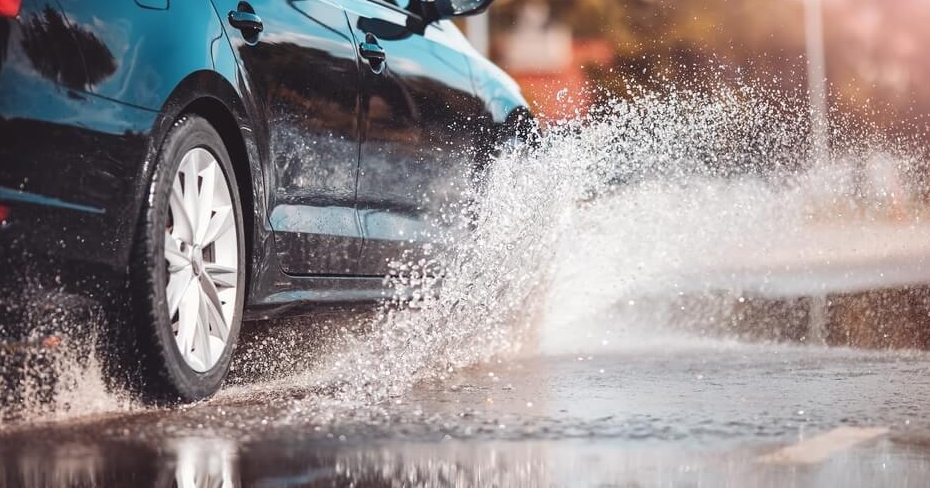How to spot signs of water damage in your car
By: Steven Brennan on May 6, 2025
In recent years Canada has seen more instances of extreme weather, and 2024 was no exception. Flash floods swept through parts of Ontario and Alberta last summer, shutting down roads in Toronto and leaving thousands without power during intense July rainstorms.
As climate change drives more intense rainfall and flooding, the risks to vehicles are growing, too. Water damage can show up in things like faulty electrical systems, a musty odour or rust and corrosion in unexpected areas.
Whether you’re inspecting a pre-owned vehicle for purchase or just making sure your car is safe to drive after a big storm, knowing how to spot water damage and prevent it from happening in the future is a crucial skill set for all drivers.
Signs your car has been water damaged
The early signs of water damage often show up in your car’s electrical system. Power windows, locks, seats or dashboard lights acting up could be signs that moisture has seeped into the wiring.
Beyond that, a musty or mouldy smell, particularly when you turn on the A/C or heating, is another strong indicator of water damage, as well as damp carpets, water stains or moisture in the glovebox. Significant moisture that's left unchecked can lead to mould or mildew within a day or two.
A lesser-known indicator could be internal condensation.
According to Mark Whinton, owner of the Car Questions Youtube account, “condensation on the inside windows or dashboard on a hot day can be a sign the vehicle has taken on water.”
When it comes to spotting a water-damaged engine, the engine bay can reveal some clues.
You can check the oil dipstick for oil that looks milky or discoloured. Most of the time, this isn’t a strong indicator of anything amiss, but after a storm, it could signal that water has contaminated the engine. Even a recent oil change won't fully hide residue around the oil cap.
On top of that, look out for rust or corrosion in places that shouldn’t normally rust. Finding rust on bolts, brackets or inside the air filter housing is a strong sign the engine was submerged.
How to avoid water damage during a flood
Floodwaters can cause serious, sometimes irreversible damage to your car, but with a few precautions, you can help minimize this risk.
First and foremost, always do your best to avoid driving during extreme weather if a flood warning is in effect.
“Heavy rain won’t hurt your car as long as it’s locked with the windows closed,” says Whinton. “But driving through more than 30 cm of standing water can result in catastrophic engine damage.”
If you happen to get caught in a storm, don’t leave your vehicle parked in a flood-prone area. Try to park on higher ground if possible — and stay clear of underground parking.
If you’ve had to drive through water, Whinton suggests having your car inspected by a mechanic as soon as possible.
“If the water levels have exceeded 60 cm, do not start the engine,” he advises. “Tow it to a shop for a full inspection and fluid change.”
You’ll also want to dry out the interior as quickly as possible. Remove wet floor mats, run fans or a dehumidifier and open the windows to speed up the process. In addition to leaving a musty odour that can be hard to remove, lingering mould can also cause damage to your car's upholstery and HVAC and lead to electrical issues if water seeps into any wiring.
Another precaution you can take is to become familiar with the risk of flooding in your location. If you live or work in a low-lying area, familiarize yourself with local flood maps and consider finding alternate parking options during storm and snow season.
Related: What to know about weatherproofing your electric vehicle (EV)
How to avoid buying a water-damaged used car
If you’re shopping for a used car, a few extra precautions can help you avoid purchasing a car that is hiding water damage.
Always start by requesting a vehicle history report through a trusted provider like CARFAX or AutoCheck. These reports can flag insurance claims, past damage or whether a car has been registered in a flood-prone area.
Water damage isn’t always obvious, so sometimes you’ll need to trust your gut. Ultimately, the most effective way to protect yourself might be to pay an expert to inspect any used car you’re considering.
“It costs a few bucks, but it can save you thousands if the car has flood damage that wasn’t reported - and plenty are not,” says Whinton.
Related: How to make sure that the car you're buying is not stolen?
Is water damage covered by auto insurance?
Whether or not your insurance will cover flood damage depends largely on the type of coverage you’ve got.
Flood-related damage is typically only covered under comprehensive auto insurance, but even with comprehensive coverage, it’s worth reviewing your policy for any exclusions. Some plans may limit protection against natural disasters, or acts of God, and not all insurers treat water damage the same way.
To make sure you're getting the protection you need at the best possible price, you can compare auto insurance quotes at LowestRates.ca.
Read next: What you need to know about insurance for a new versus used car
Save 23% on average on car insurance
Compare 50+ quotes from Canadian providers in 3 minutes.
.jpg?itok=csBN-HRa)

